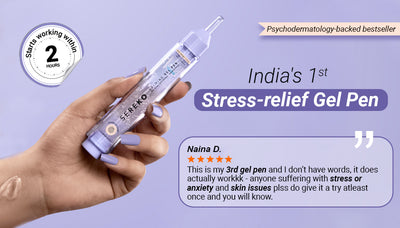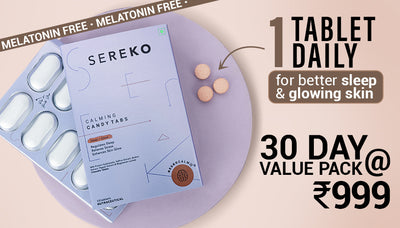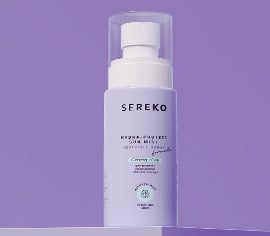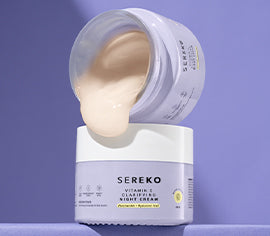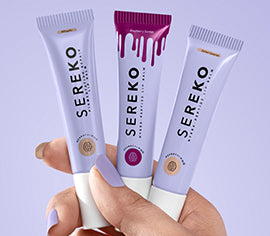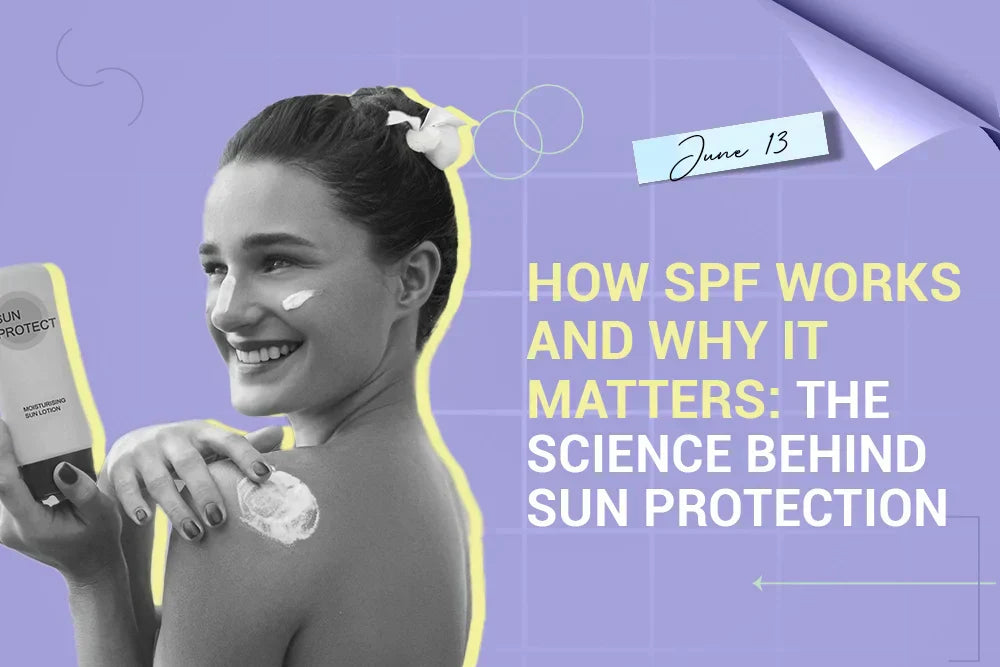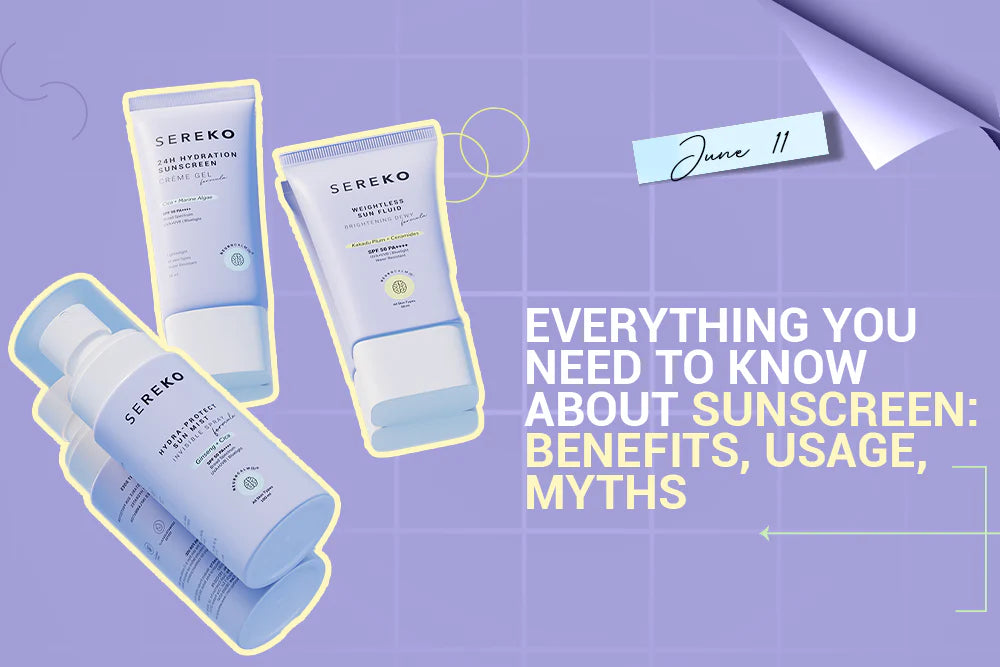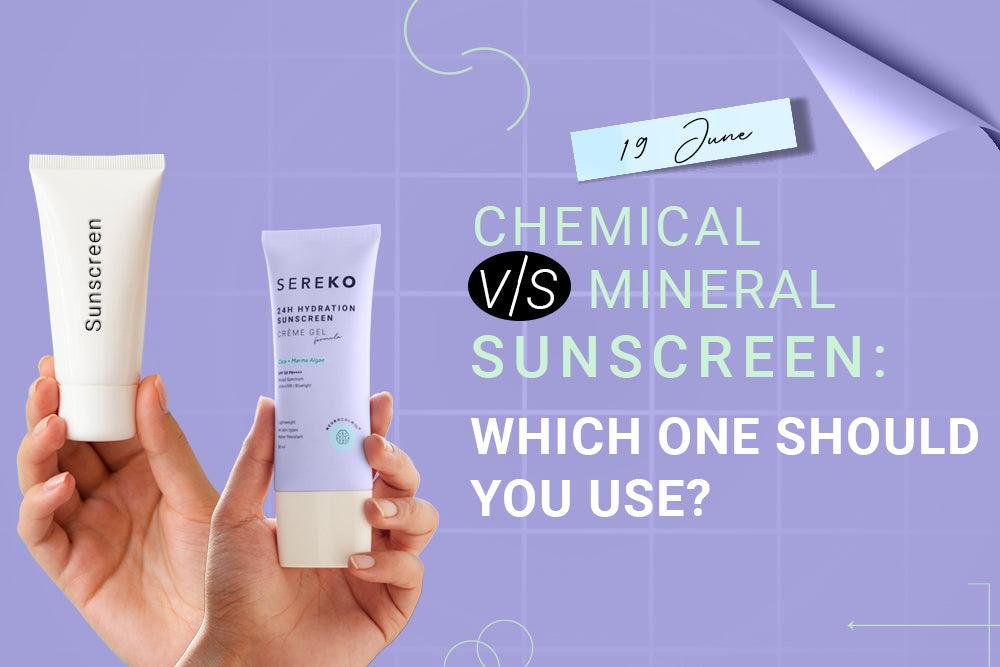Sunscreen is a vital part of preserving your skin’s health and youthfulness. But what does SPF really mean, and how does it shield your skin from harmful UV rays?
In this guide, we break down the science behind SPF, explore how different sunscreens work, and explain why using the right SPF daily is one of the most effective steps you can take for long-term skin protection.
What is SPF?
SPF, or Sun Protection Factor, measures a sunscreen's ability to protect skin from UVB rays, which cause sunburn and contribute to skin cancer. For example, SPF 30 means it would take 30 times longer for skin to burn than if you weren’t wearing any protection.
What Does SPF Numbers Indicate?
SPF 15 filters about 93% of UVB rays, SPF 30 blocks 97%, and SPF 50 blocks 98%. While the increase in protection appears small, the difference is significant, especially for sensitive skin types or prolonged sun exposure.
Common Misconceptions About SPF Ratings
Many believe higher SPF means they can stay in the sun indefinitely. However, no sunscreen offers 100% protection, and reapplication is crucial. Another myth is that SPF 100 is twice as effective as SPF 50, which is misleading.
Role of Antioxidants in Sun Protection
Many modern sunscreens now include antioxidants like Vitamin C, Vitamin E, and ferulic acid. These ingredients don’t replace SPF but provide secondary protection by neutralizing free radicals that do manage to penetrate the skin, offering an added layer of anti-aging and anti-inflammatory defense.
Photostability: Why Some Sunscreens Degrade
Certain chemical filters, like avobenzone, degrade when exposed to sunlight unless stabilized with other ingredients. This is called photodegradation, and it’s why some sunscreens lose effectiveness over time. Advanced formulations combine multiple filters to ensure photostability, so your sunscreen works longer and better.
What Happens When UV Rays Hit the Skin
When UV rays strike the skin, they interact primarily with keratinocytes—the skin cells in the outermost layer of the epidermis. Here's how each UV type behaves:
-
UVA Rays penetrate deeper, reaching the dermis. They damage collagen fibers and stimulate the production of abnormal elastin, leading to photoaging (wrinkles, sagging, dark spots).
- UVB Rays mostly affect the epidermis, causing sunburn and direct DNA damage. They’re the main culprit in skin cancers like basal cell carcinoma and squamous cell carcinoma.
The body attempts to repair this damage, but repeated exposure overwhelms the repair process, leading to mutations, inflammation, and long-term cellular degradation.
UV rays don’t just harm skin cells, they also suppress the skin’s immune response, making the body less effective at detecting and repairing abnormal cells. This is one reason sunburn increases skin cancer risk.
The Role of Melanin and Why It’s Not Enough
Melanin offers natural photoprotection by absorbing and scattering UV rays. However, it only offers a natural SPF of about 2–4, far too low for effective protection. Even though darker skin tones are less prone to sunburn, they are still susceptible to:
- Hyperpigmentation
- Photoaging
- UVA-induced DNA damage
- Hard-to-detect forms of skin cancer, like acral lentiginous melanoma
SPF is therefore necessary for all skin types, regardless of pigmentation.
This section breaks down the biological and chemical processes behind sun protection, helping you make smarter choices for your skin.
The Science Behind How SPF Works
UVB vs. UVA Rays
UVB rays damage the skin's outer layers, causing sunburn and playing a key role in skin cancer development. UVA rays penetrate deeper, leading to premature aging, pigmentation, and DNA damage. Broad-spectrum sunscreens protect against both.
How Sunscreens Absorb or Reflect UV Radiation
Chemical sunscreens (like avobenzone or octinoxate) absorb UV rays and convert them into heat. Physical sunscreens (like zinc oxide or titanium dioxide) sit on the skin and reflect or scatter UV radiation.
How Long Does SPF Protection Last?
SPF isn’t permanent. Sweat, water, and natural skin oils break it down. Reapply every two hours, or more frequently if swimming or sweating.
Water Resistance and Sweat-Proofing: No sunscreen is completely waterproof or sweat-proof, despite common misconceptions. If a product is labeled “water-resistant,” it means the SPF remains effective for up to 40 minutes in water. “Very water-resistant” extends that to 80 minutes. After these times or if you've towel-dried, reapplication is essential to maintain protection.
Always check the label and reapply accordingly during water or high-sweat activities to ensure continuous sun defense.
The Importance of SPF Formulation & Texture
The vehicle of the sunscreen (gel, fluid, cream) affects absorption, spreadability, and photoprotection. A water-light sun fluid, for instance, is ideal for oily skin types, while a thicker cream might better suit dry skin.
Inconsistent application or poor formulation can cause "photoleaks"—areas where UV penetrates due to uneven coverage.
Different Sunscreen Filters
-
Chemical filters contain aromatic compounds with conjugated double bonds, which absorb high-energy UV photons and release the energy as harmless heat.
-
Physical filters, like zinc oxide and titanium dioxide, use crystalline particles to scatter and reflect UV rays like microscopic mirrors.
- Encapsulation technologies (e.g., encapsulated salicylic acid in acne serums or SPF) improve stability and allow deeper skin delivery while reducing irritation.
Broad-Spectrum Explained
A broad-spectrum sunscreen protects against both UVA and UVB rays. Look for this label to ensure comprehensive protection.
Differences Between Physical and Chemical Sunscreens
-
Physical SPF (aka mineral): Sits on the skin, reflects rays. Ingredients: Zinc oxide, titanium dioxide.
-
Chemical SPF: Absorbs rays into the skin. Ingredients: Oxybenzone, avobenzone, octocrylene.
Pros and Cons of Each Type
-
Physical SPF: Less irritating, great for sensitive or acne-prone skin, but can leave a white cast.
- Chemical SPF: Lightweight, blends easily, but can irritate sensitive skin and take time to start working.
Choosing the Right SPF for Your Needs
Not all SPF levels offer the same protection, and your ideal sunscreen depends on your lifestyle, environment, and skin type. This section helps you compare SPF 15, 30, and 50+, and offers practical guidance for everyday wear, outdoor activities, and different skin tones.
1. SPF 15 vs. SPF 30 vs. SPF 50+
For daily use, SPF 30 is sufficient. For outdoor or prolonged exposure, opt for SPF 50 or higher. SPF 50 PA+++ is ideal for intense sun exposure and sensitive skin types.
2. Lifestyle-Based SPF Recommendations
-
Daily (indoors): SPF 15–30
-
Commuting/Errands: SPF 30
-
Outdoor Activities: SPF 50 PA+++
- Beach/Water Sports: Water-resistant SPF 50+ PA+++
3. Skin Tone and SPF Needs
All skin tones need SPF. While melanin offers some natural protection, it doesn’t shield against UVA or prevent long-term damage. Darker skin tones benefit from broad-spectrum formulas that prevent pigmentation.
4. Sunscreen for Kids and Babies
Children’s skin is more delicate and sensitive to UV damage than adult skin, making sun protection critically important from an early age. However, not all sunscreens are safe or appropriate for young children, especially infants.
Babies under 6 months:
Avoid direct sun exposure as much as possible. Their skin is too sensitive for most sunscreen products. Instead, use protective clothing, hats, shade, and sun avoidance during peak hours (10 a.m. to 4 p.m.). If sunscreen is absolutely necessary for small areas (like the back of hands), use a minimal amount of broad-spectrum mineral sunscreen (with zinc oxide or titanium dioxide) after consulting a pediatrician.
Children 6 months and older:
Look for a broad-spectrum, water-resistant sunscreen with SPF 30 or higher, ideally with physical (mineral) filters like zinc oxide or titanium dioxide, which are less likely to irritate the skin. Avoid sprays (which are harder to apply evenly and can be inhaled) and opt for creams or sticks. Reapply every 2 hours or after swimming or sweating.
Tips for sunscreen use on kids:
Apply sunscreen 15–30 minutes before going outside.
Don’t forget easy-to-miss spots like ears, tops of feet, and the back of the neck.
Choose fragrance-free, hypoallergenic formulas to minimize irritation.
Protecting children's skin early builds a foundation for healthier skin throughout their lives.
Let’s be honest: SPF is non-negotiable. But not every sunscreen is built the same, and finding one that fits seamlessly into your routine and feels good on your skin makes all the difference. Whether you're hydrating parched skin, refreshing on the go, or brightening a dull complexion, there's a SEREKO sunscreen made just for you.
Here’s how to choose the perfect one:
1. 24H Hydration Sunscreen

SPF 50 | PA++++ | Crème-Gel | For: Deep Hydration + Everyday Defense
Meet your daily go-to. This waterlight crème-gel formula delivers 24H hydration while shielding you from sun damage, blue light, and pollution. Cica and Marine Algae soothe, cool, and deeply hydrate — ideal for dry, sensitive, or irritated skin.
-
Texture: Lightweight, quick-absorbing, no white cast
-
Feels like: A cooling drink of water for your skin
-
Why we love it: Layers effortlessly under makeup; doubles as a light moisturiser
-
Skin Mood Match: Stressed, dehydrated, sensitive
2. Hydra-Protect Sun Mist

SPF 50 | PA++++ | Ultra-Fine Mist | For: On-the-Go Refresh + Redness Relief
This one’s for those who are always on the move. An ultra-fine mist that sets in seconds, perfect for reapplication without disturbing makeup. Ginseng and Centella calm inflammation and hydrate, while the refreshing spray resets both skin and mood.
-
Texture: Invisible mist, instantly cooling
-
Feels like: A calming breeze on a hot day
-
Why we love it: Mess-free, ideal for layering, non-comedogenic
- Skin Mood Match: Oily, reactive, midday-fatigued
3. Weightless Sun Fluid

SPF 50 | PA++++ | Dewy Fluid | For: Brightening + Barrier Support
Your 3 in 1 brightening, hydrating and sun protection fluid. With Vitamin C-rich Kakadu Plum and Ceramides, this SPF not only protects but evens tone, supports collagen, and strengthens the skin barrier. Perfect for those looking to correct, protect, and glow — all in one step.
-
Texture: Fluid, dewy finish, no white cast
-
Feels like: That golden-hour filter, bottled
-
Why we love it: Mineral + New Gen filters = high protection, low irritation
-
Skin Mood Match: Dull, uneven, barrier-compromised
Here’s a quick cheat sheet to help you decide:
Still Not Sure Which One?
Sunscreen Best For Key Texture Hero Skin Benefit Hydration Sunscreen Daily use, dry/sensitive skin
Crème-Gel
24H moisture + calming
Sun Mist Reapplication, redness
Ultra-fine spray
Instant refresh
Weightless Sun Fluid
Dullness, tone correction
Waterlight fluid
Brightening + protection
Each sunscreen is powered by NeuroCalm(S)®, our signature proprietary blend that helps reduce stress-related skin triggers.
Why SPF is Crucial for Skin Health
Beyond preventing sunburn, SPF plays a vital role in protecting your skin from long-term damage. From reducing the risk of skin cancer to slowing signs of aging, daily sunscreen use is a cornerstone of overall skin health and resilience.
1. SPF and Skin Cancer Prevention
UV radiation is the leading cause of skin cancer. Regular use of SPF reduces the risk of basal cell carcinoma, squamous cell carcinoma, and melanoma.
2. SPF and Anti-Aging (Wrinkles, Sun Spots)
Sunscreen prevents signs of aging by protecting collagen and elastin fibers in the skin. It reduces the appearance of fine lines, wrinkles, and pigmentation.
3. Daily Use Benefits Even Indoors or in Winter
UVA rays penetrate glass and clouds. Using SPF daily, regardless of the weather, ensures year-round protection and cumulative skin benefits.
4. Sunscreen Expiry and Storage Conditions
Sunscreen loses its effectiveness over time, especially when exposed to heat or stored improperly, which can compromise your skin protection.
Expiry: Most sunscreens are effective for up to 3 years, but always check the expiration date or the period-after-opening (PAO) label. Using expired sunscreen can reduce UV protection and may irritate the skin.
Storage Tips:
- Store sunscreen in a cool, dry place away from direct sunlight.
- Avoid leaving it in hot areas like cars or near windows.
- Keep the container tightly closed to prevent oxidation or contamination.
- On outdoor days, store sunscreen in a shaded bag or wrap it in a towel to minimize heat exposure.
When sunscreen changes in texture, smell, or color, it’s time to replace it—even if it hasn’t expired yet.
Common Myths About SPF
1. “Higher SPF Means I Can Stay Out Longer”
Even SPF 100 doesn’t make you invincible. Reapply every 2 hours.
2. “You Don’t Need SPF on Cloudy Days”
Up to 80% of UV rays can pass through clouds.
3. “Dark Skin Doesn’t Need SPF”
All skin tones are at risk for sun damage, discoloration, and skin cancer.
How to Maximize Your SPF Protection
Even the best sunscreen won't work effectively if it's not used correctly. From proper application techniques to smart reapplication habits, maximizing your SPF means getting the full benefit of your sun protection. Here's how to ensure you're truly shielding your skin from UV damage all day long.
1. Correct Application Techniques
The Two-Finger Rule is a simple and visual guideline for applying the correct amount of sunscreen to your face and neck:
You squeeze a line of sunscreen along the entire length of your index and middle fingers from base to tip. That’s the amount you should apply to cover your face and neck adequately.
2. Reapplication Frequency
Reapply every 2 hours, or after swimming, sweating, or towel drying.
3. Layering with Makeup or Moisturizers
Apply sunscreen as the final step in your skincare routine before makeup. Reapply with SPF sprays or cushions throughout the day.
Conclusion
Make SPF a daily habit, just like brushing your teeth. Keep it somewhere visible, set gentle reminders, and most importantly, choose a sunscreen that suits your skin. Whether you have oily skin, dry skin, or need something lightweight for everyday wear, SEREKO has a sunscreen for every skin type and every need.
To know more about you can read our latest blog: Everything You Need to Know About Sunscreen: Benefits, Usage, Myths
